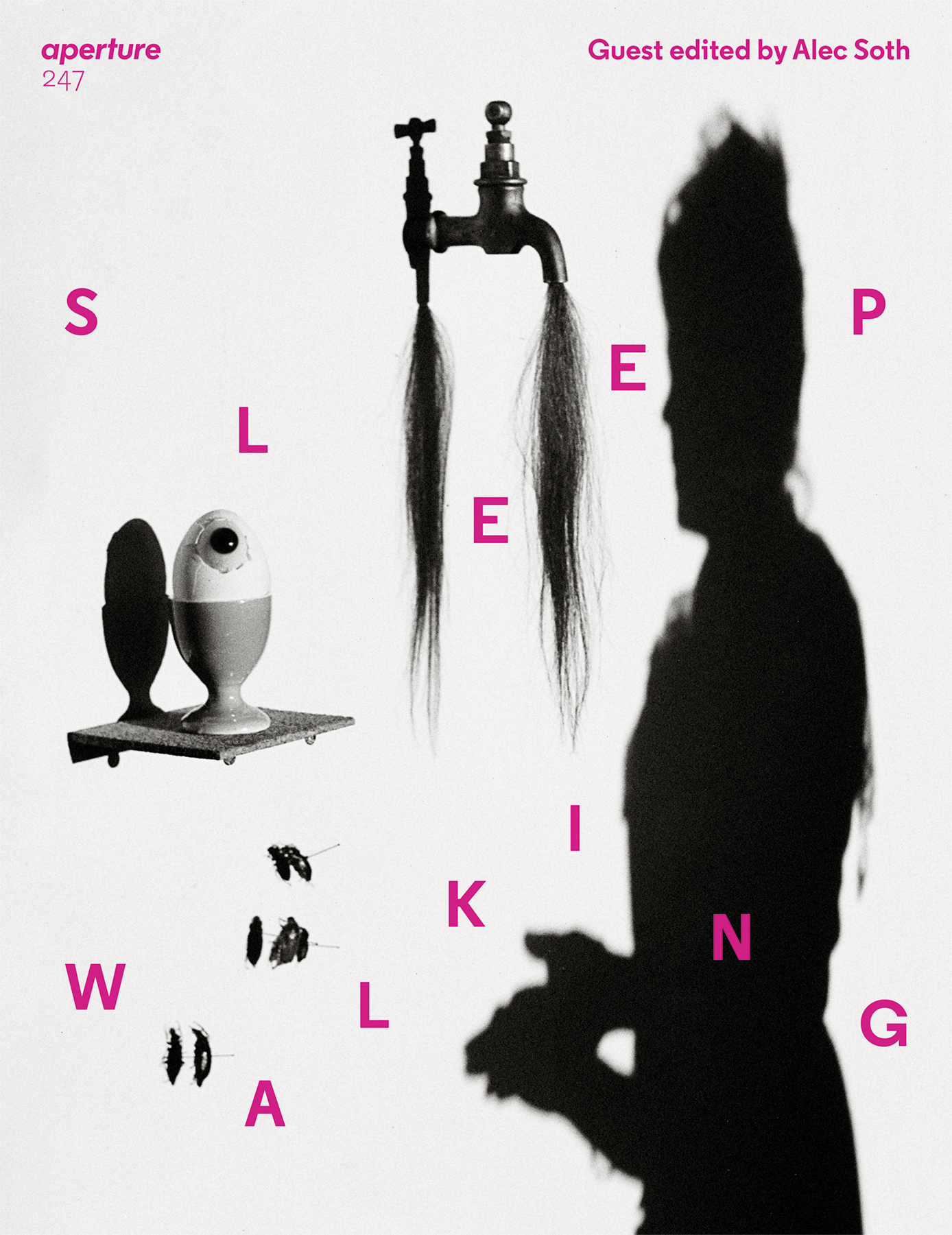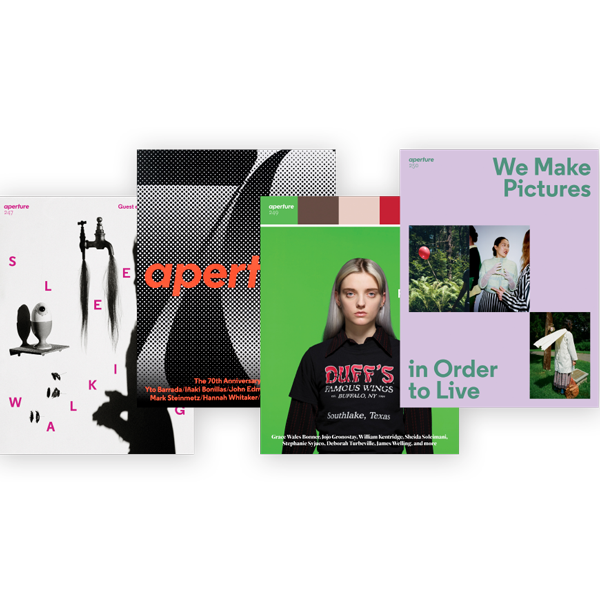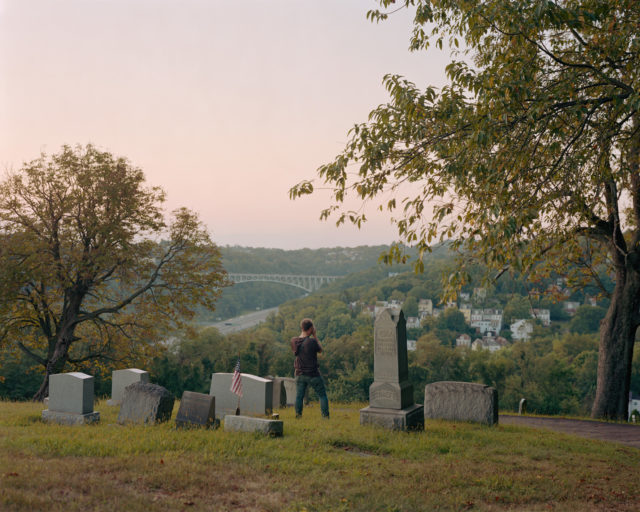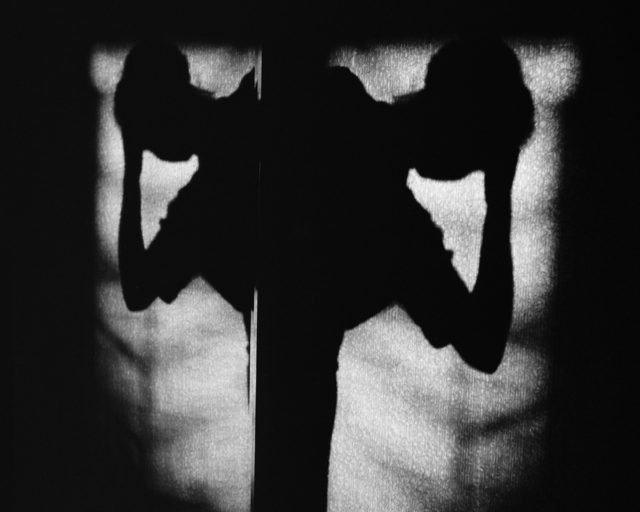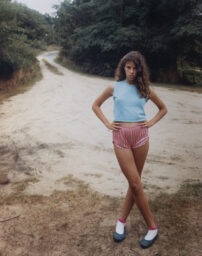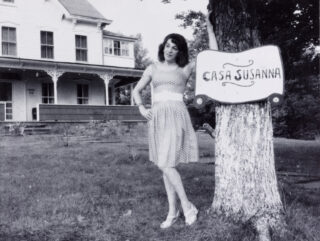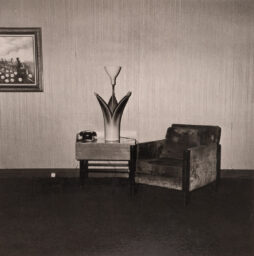Elliott Jerome Brown Jr., I want to impress leaves on paper with colors they could only know there, where cherries blossom in jacaranda blue, 2020
The photographer Elliott Jerome Brown Jr. makes imagery that is weird, obscure, ambiguous, and freaky, packed with impossible, hard-to-decipher elements that never betray any simple or obvious meaning. His titles are cryptic, often splitting the difference between punchy non sequiturs and deeply felt but emotionally abstract poetry—information that only gets more puzzling when you learn that Brown writes them in reference to part of the overall picture. His subjects, who are without exception Black men and women, are often out of frame, subtly distorted, or caught in the cross fire of competing optical illusions. In the rare instances when they face Brown’s camera directly, their features are lit up with campfire-story menace or bolts of neon light, their expressions halfway between a belly laugh and a masklike grimace.


Inspired by Lorna Simpson, Carrie Mae Weems, and Deana Lawson, Brown’s early work riffed on the idea of the domestic realm as a private theater of unguarded Black humanity, posing his friends and family in casual scenes heavy on themes of desire and intimacy. In subsequent years, Brown internalized his heroines’ ambiguity (Simpson), drama (Weems), and boldness (Lawson), while veering away from literal living spaces into much odder kinds of interiority, ditching straightforward representation or easily nameable emotions in the process.
His recent work is more intuitive, informed by the contrived-casual body language on Instagram, notes and sketches on his iPhone, and the practicalities of photographing. Brown occasionally finds inspiration closer to home. Holes in the plastic lattice weave of his kitchen chair led to the unusual shot-from-below composition of I want to impress leaves on paper with colors they could only know there, where cherries blossom in jacaranda blue (2020). The portrait depicts two men embracing at a table. In the foreground, a hazy fist is either clutching or punching the viewer while what looks like a child’s homework assignment and sixth-birthday candle are taped to the wall beside it. On closer observation, you realize that the “wall” is the underside of the table, the punch is actually holding them steady, and the embrace is both sweeter and stickier than at first appearance.
Brown’s subjects’ inner worlds are as elliptical and compelling as an M. C. Escher staircase, with an internal logic built up more from fiction than depiction. In breaking from the familiar, the artist has front-loaded his images with uncanny details that are striking and confounding: skin crawling textures, poisonously bright colors. In the tradition of Hitchcock, much of the suspense found in Brown’s photography comes from what he withholds from the frame. We seek the answers to the riddles: Why does he photograph from those angles? What are the reactions on his models’ faces? Where in the flurry of impressions should we direct our focus?
In a 2020 interview with W, Brown explained, “Working with the margins at first grew out of a political positioning, recognizing that the margin is an important way to read the center. And what’s held at the margin—there’s a lot of power there . . . tucking things into the margins of the photograph allows me to indicate that there is something beyond the focus, or the purported focus.” By keeping his viewer looking on from the furthest ends of the margins, Brown creates a vision of Black subjectivity that is infinitely definable, drawing the viewer’s attention past more obvious emotional and political dimensions to the most fraught and unresolvable states of what it means to be human.

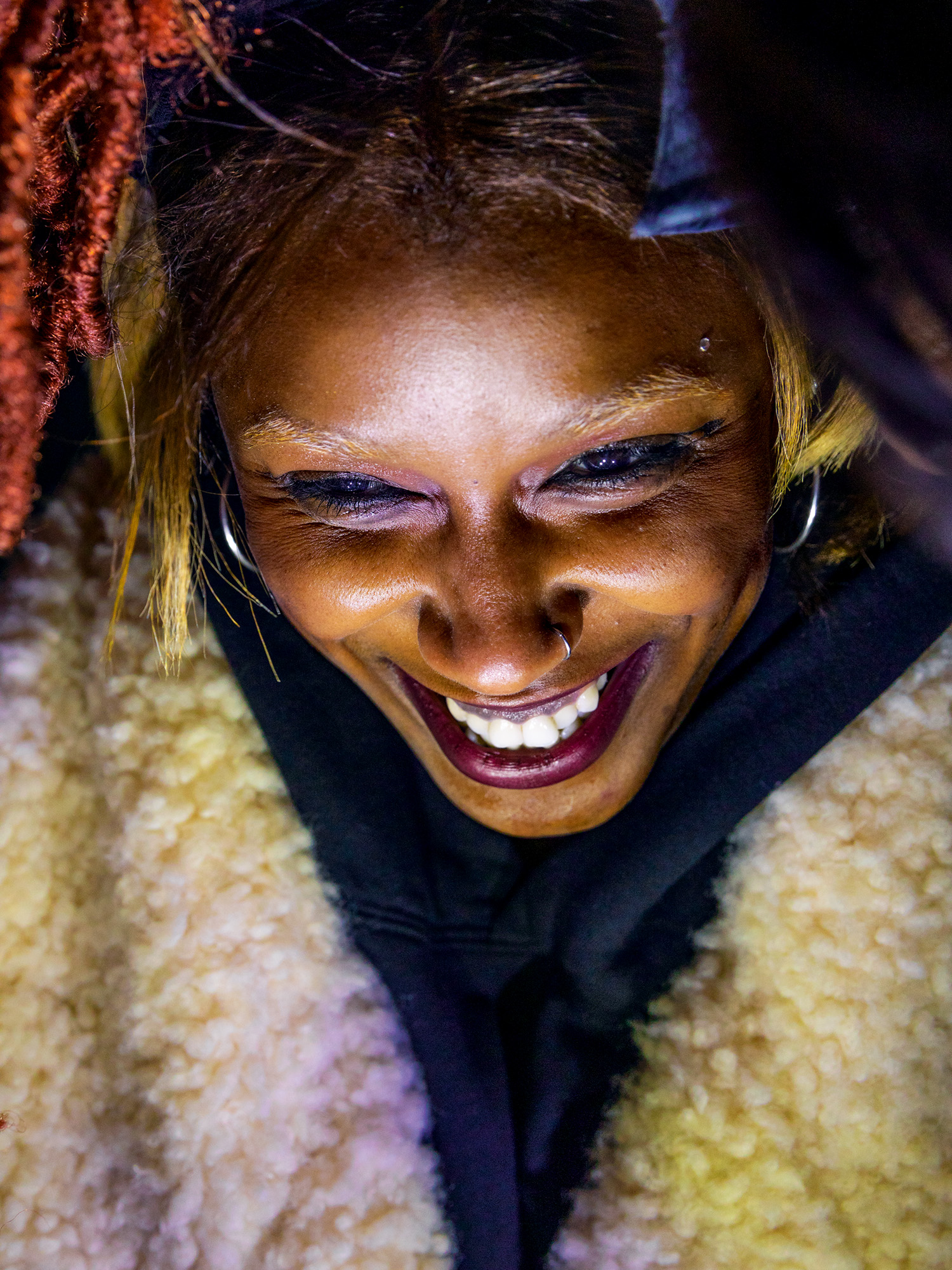

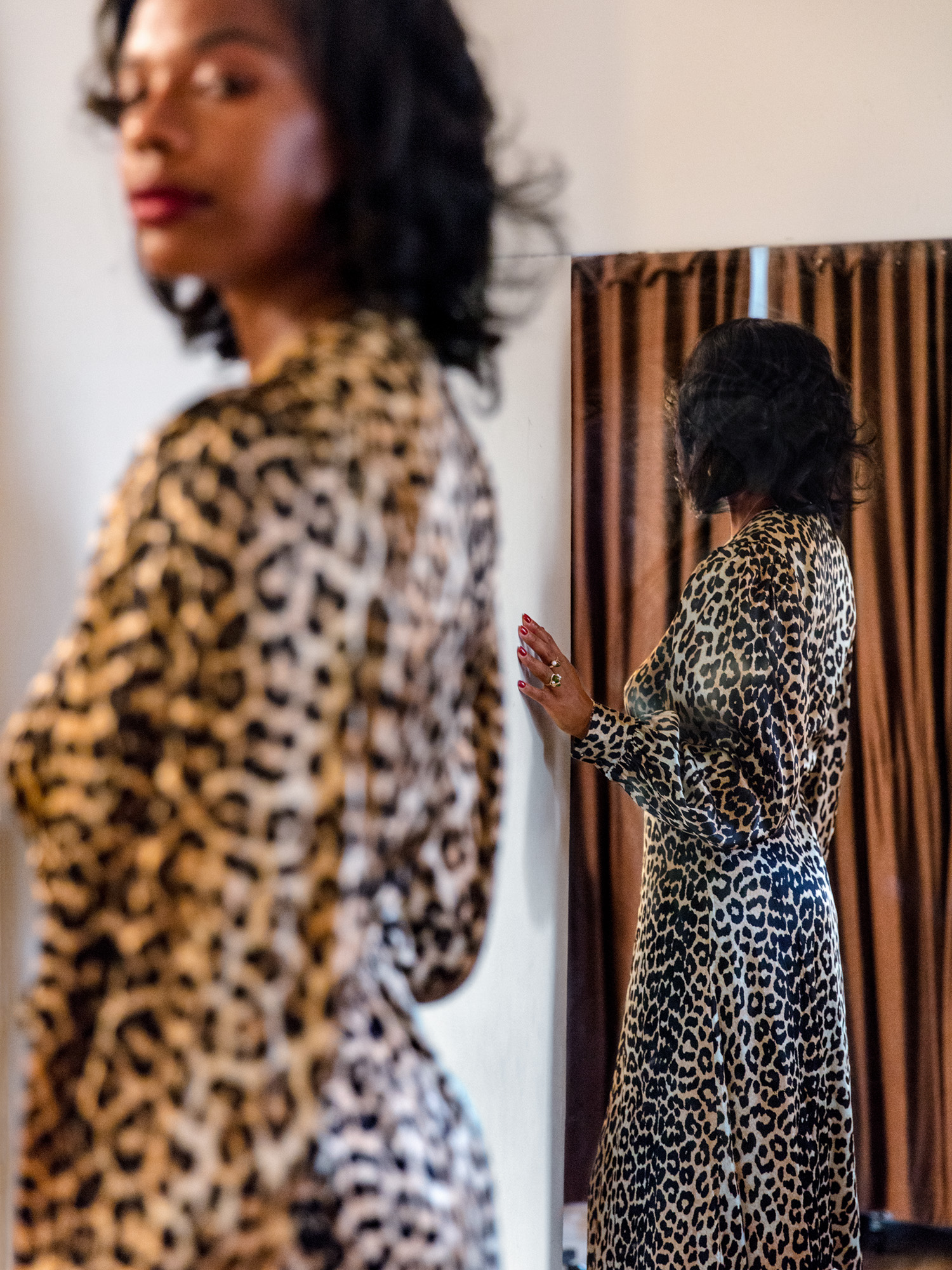
All photographs courtesy the artist and Nicelle Beauchene Gallery, New York
This article originally appeared in Aperture, issue 247, “Sleepwalking,” under the title “Where Cherries Blossom.”











